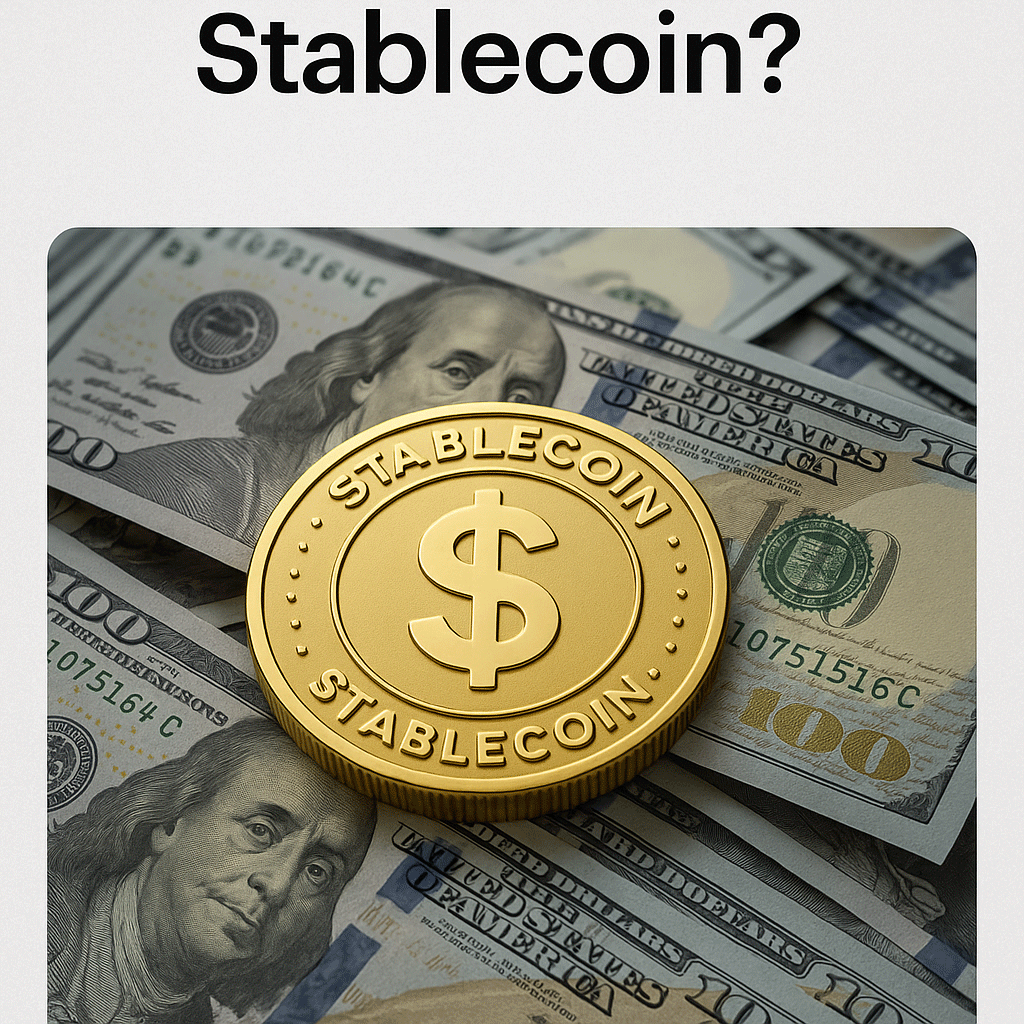In the rapidly evolving world of cryptocurrencies, price volatility remains one of the biggest challenges. Bitcoin, Ethereum, and other digital assets often experience dramatic price swings. But what if there were a digital currency designed to maintain a stable value? Enter the stablecoin.
What Is a Stablecoin?
A stablecoin is a type of cryptocurrency that is pegged to a reserve asset such as a fiat currency (like the US dollar), commodities (like gold), or even another cryptocurrency. The primary purpose of stablecoins is to provide price stability in the highly volatile crypto markets.
Unlike Bitcoin or Ethereum, whose prices fluctuate due to market demand, stablecoins aim to keep their value consistent. They are often used as a medium of exchange, a store of value, and a tool for transferring assets without the traditional banking system.
Types of Stablecoins
1. Fiat-Collateralized Stablecoins
These stablecoins are backed 1:1 by a fiat currency held in reserve. Examples include:
- USDT (Tether)
- USDC (USD Coin)
- BUSD (Binance USD)
These reserves are often audited to ensure transparency and trust.
2. Crypto-Collateralized Stablecoins
Backed by other cryptocurrencies, these require over-collateralization due to the inherent volatility of crypto assets. Example:
- DAI (backed by Ethereum and other crypto assets on the MakerDAO platform)
3. Algorithmic Stablecoins
These are not backed by any reserve but maintain their peg through algorithms and smart contracts that control supply and demand. A notable example is:
- Ampleforth (AMPL)
Why Stablecoins Matter
Stablecoins play a critical role in the crypto ecosystem:
- Hedge Against Volatility: They offer a safe haven during market downturns.
- Efficient Transactions: Useful for cross-border payments and remittances.
- DeFi Integration: Many decentralized finance applications rely on stablecoins for lending, borrowing, and yield farming.
Use Cases of Stablecoins
- Trading on exchanges without converting to fiat.
- Remittances and cross-border payments.
- Earning interest through lending platforms.
- Online purchases and payment systems.
Challenges and Regulatory Concerns
Despite their advantages, stablecoins face regulatory scrutiny. Governments and financial institutions are concerned about transparency, reserve backing, and potential misuse in illicit activities. The recent push for stablecoin regulation in the US and EU reflects these concerns.
Internal Resources:
External References:
FAQ
Q: Are stablecoins completely risk-free? A: No, while they are less volatile, risks include reserve transparency, de-pegging events, and regulatory challenges.
Q: Can I earn interest with stablecoins? A: Yes, many DeFi and CeFi platforms offer interest on stablecoin deposits.
Q: Are stablecoins legal? A: It depends on the jurisdiction. Many countries allow them but are introducing regulatory frameworks.

 Bitcoin
Bitcoin  Ethereum
Ethereum  Tether
Tether  XRP
XRP  USDC
USDC  Lido Staked Ether
Lido Staked Ether  TRON
TRON  Dogecoin
Dogecoin  Cardano
Cardano